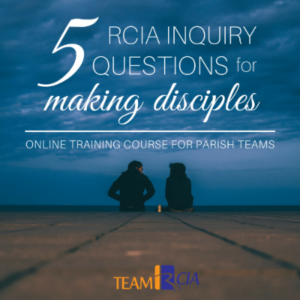 Why is the Eucharistic Prayer important? When I was a child, I thought it was because that’s the moment in the Mass when the bread and wine are turned into the Body and Blood of Jesus. And while that’s true, that is a very narrow understanding of the importance of the prayer.
Why is the Eucharistic Prayer important? When I was a child, I thought it was because that’s the moment in the Mass when the bread and wine are turned into the Body and Blood of Jesus. And while that’s true, that is a very narrow understanding of the importance of the prayer.
In fact, the Anaphora [Eucharistic Prayer] of Addai and Mari, from the Assyrian Rite, doesn’t even have what we would recognize as a “consecration.” And yet, Pope John Paul II himself authorized it an authentic Eucharistic Prayer.
Remembering is not about the past
To understand the importance of the Eucharistic Prayer, we have to understand a Greek word: anamnesis. There is no really good English translation of anamnesis. In our Eucharistic Prayers, it is sometimes translated as memorial (“Therefore, as we celebrate the memorial of his death and resurrection…”). Memorial is too static, however. Anamnesis is active. A somewhat better translation is remember (“We remember Christ’s death…”). The problem with remember is it tends to make the anamnesis past tense.
When it is prayed in the midst of the worshipping assembly, the Eucharistic Prayer is an active remembering of who God is and God’s saving action (the culmination of which is Jesus Christ). And by remembering who God is, we “remember” who we are. It is this active remembering (anamnesis) that is consecratory.
Are you ready to sacrifice?
The Eucharistic Prayer is more than just a memory of what took place in the past. It is also more than a monument that we might erect to a hero from ancient times. It is an actualization of the event of Jesus Christ. It is an event that is unfolding, right now, right in the midst of us, right in us. And because Jesus is now in us, and we in him, that creates an ethical responsibility. We cannot simply go home on Sunday and try to catch the rest of the game or head to the mall as if nothing happened. The bread and wine are changed so that we will be changed (“all who partake…truly become a living sacrifice in Christ…”).
The action of the Eucharistic Prayer isn’t meant to be a theology lesson. Nor is it about my personal moment with Jesus. It is a radically communal action that transforms us—all together—into a living sacrifice in Christ.
As parish communities, we have to ask ourselves at the end of each Sunday Mass, so what? What are we going to do now that we are a living sacrifice in Christ? How will we live out that sacrifice in the world? How will our families, friends, neighbors, and coworkers see that transformation in us? And how will our transformed selves translate into good news for them?
The “so what” for RCIA teams
As RCIA teams, we have to help the catechumens understand that this is what they are preparing for. Then, when they become neophytes, the event of the Eucharistic Prayer should not seem all that novel to them. In the action of the prayer, they should recognize the remembering (anamnesis) of who God is and who they are. The actual words might be new, but the action should feel like getting to drive the car for the first time. They should “remember” how to do it (participate in the action of the prayer) because you have been doing anamnesis with them throughout their catechumenate.
![]() Check out this webinar recording: “How to Teach the Eucharistic Prayer.” Click here for more information.
Check out this webinar recording: “How to Teach the Eucharistic Prayer.” Click here for more information.
What are your thoughts?
Why do you think the Eucharistic Prayer is important? What challenges you about teaching the action of the prayer to your catechumens? What have you done that works?
“New And Old Leaf” by wandee007 | FreeDigitalPhoto.net









This post is so timely, I will be teaching 6th grade PSR this evening about this topic. After reflecting on what you wrote about Anamnesis, I think I am going to present it to them by reading your two paragraphs and then tell them that it is like “remembering when they breathed” – of course we all still breathe. Maybe I’ll even link the breath idea into how when we talk about the Holy Spirit that it is often as being breathed into or onto us. We might even have a science experiment where some of the students hold their breath – because they will not die.
Hi Patti. I’m glad it was helpful! That’s a wonderful image about breathing.
Nick
Great article. I will use it in a presentation next week. It ties in with the statement from St. Augustine: See what you are, BE what you receive.
Hi Mary Jane. Terrific point about the quote from St. Augustine! I’m glad the article was helpful. Blessings on all your work.
Nick
THank you for this article! I am looking forward to future ones like this. I am going to apply this to a junior high sacrament class I will be teaching tonight.
Terrific Martie! I hope it goes well.
Nick